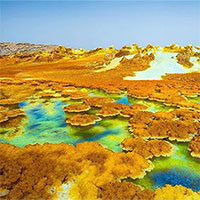In the heart of magnificent and expensive Paris, the largest farm in the world is about to open. Notably, this farm is located on the rooftop of a 6-storey building .
On a warm late spring afternoon, before our eyes appeared the image of rows of strawberries rustling in the wind along with the faint scent of herbs spreading everywhere. All in harmony with the humming of bees nearby, taking advantage of the last drops of honey…

The new rooftop farm in Paris will be the largest in the world. (Photo: Valode & Pistre Architectes Atlav AJN)
It’s hard to believe that this is a view from the roof of a six-story building in the heart of the French capital, because it was previously only seen in the idyllic and tranquil countryside.
Welcome to the agricultural future of Paris – the land of farms and plantations on the roofs of high-rise buildings . But these huge farms are just a drop in the ocean, compared to this ‘junior’. When the new facility opens, in spring 2020, it will become the largest rooftop farm in the world.
This farm is currently under construction in the southwest of the city, about 14,000 square meters in size. With this area, this is also considered the largest urban farm in Europe . It is expected that 30 different species of trees will be planted here and the farm is expected to produce about 1 ton of fruit and vegetables per day in all seasons. The farm has 20 gardeners and all vegetables are grown organically.

The aim of the farm is to become a global model of sustainable production. (Photo: Valode & Pistre Architectes Atlav AJN).
Pascal Hardy, founder of the Agripolis project, says the goal of the project is to make the farm a global model of sustainable development. “We will use quality products, developed in accordance with the rhythm of nature, all wrapped up in the heart of Paris,” emphasized Pascal Hardy.
Located on the terrace of the Paris Expo Porte de Versailles exhibition complex in the 15th arrondissement of Paris, the farm has an on-site restaurant and bar that can accommodate about 300 people. When coming to this aerial eatery, visitors will have the opportunity to admire the beauty of the capital from above with a panoramic view. There’s probably no need to talk about the menus here either, as they will be served seasonally, all grown on site.
“All products will be supplied directly through community farming or through shops, hotels and canteens. Thereby, shortening the distance from the farm to the dining table. Moreover, we do not use any pesticides or chemicals, so the farm will be a paradise of biodiversity,” said Mr. Hardy.
The farm will also provide a range of services related to urban agriculture, including educational tours, seminars and events. Locals can also rent small plots of land here to grow vegetables, which will help connect city dwellers with their own food sources.

Local people can also rent small plots of land here to grow vegetables. (Photo: Valode & Pistre Architectes Atlav AJN).
“Our guiding principle for farming is to strengthen economic recovery and protect the environment in future cities,” said Mr. a model that can serve commerce well without having to rely on subsidies and philanthropy, then farms will be sustainable in their own right” .
Although we are no stranger to urban farming on a large scale, this new farm will be a breakthrough. This is not only the largest terrace farm in the world, but also a pioneer in the use of multi-layered farming techniques in aeroponics.
In addition to saying no to the use of chemicals and pesticides, no land is used, this farm also uses a closed irrigation system to grow crops, thereby minimizing pollution agents. environment. In addition, by making products available to everyone at the entrance, the carbon footprint of the farm will be extremely low.
“We are interested in vacant terraces and abandoned plots in the city,” Mr. Hardy said. We want to use them to build more farms to create a great source of food, contributing to feeding urban residents.”

Strawberries are grown on the farm. (Photo: Agripolis).
The Paris city government has also committed to greening at least 100 hectares of the city’s total area by 2020, a third of which will be devoted to urban agriculture. An example of this can be mentioned, that people have grown vegetables on the metro rail in the air in Barbès.
Among the innovative agricultural sites across the city include the eco-farm La Recyclerie built along the old road in Porte de Clinancourt and organic mushrooms grown in La Caverne, a Parking cellar in Porte de La Chapelle. One day not far, the 210m-high Montparnasse tower of Paris will also be covered with green like the terraces of high-rise buildings in this capital.

